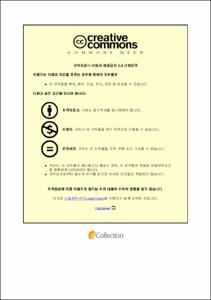HS 기계류에 대한 FTA 미소기준 활용방안 연구
- Alternative Title
- A Study on the Utilization of FTA De Minimis for HS Machinery
- Abstract
- 우리나라는 2004년 한·칠레 FTA를 시작으로 현재 15개 52개국과 협정이 발효 중이다. FTA가 수출입물품에 활용되어 그 효과를 보기 위해서는 결국 FTA 협정문에서 정한 원산지결정기준을 충족하여야 하므로 이의 기본요소인 품목분류, 과세가격평가, 정형거래조건 및 원가회계에 대한 개념을 충분히 숙지하고 활용할 수 있어야 한다. 이에 본 논문에서는 HS 품목표의 기계류에 가장 효과적으로 활용할 수 있는 보충적 원산지결정기준인 미소기준(De Minimis)을 FTA 협정별 비교분석, 미소기준 사례분석, HS 기계류 Code 분석, 한·미 FTA 기계류 분석 등을 통한 연구로 FTA 활용률을 높이고 우리나라 기계 산업의 FTA 활용혜택 수혜 기업의 확대에 기여할 수 있는 활용방안을 제시하였다. 이의 연구결과에 따른 구체적인 미소기준 활용방안으로는 물품특성에 맞는 원가관리로 기업의 ERP와 연계하는 원산지관리시스템 구축·활용, 정확한 품목분류를 위한 품목분류사전신청제도 적극 활용, 거래선 변경과 같은 새로운 Model 개발 활용 등의 방안을 제시하였고, 향후 우리기업의 FTA 활용도 제고를 위해 누적기준, 중간재 규정 등에 대한 심도 있는 비교분석이나 연관분석의 연구가 필요함을 역설하였다.
Korea has started the Korea-Chile FTA in 2004, and 15 agreements with 52 countries are now in effect. For the FTA to be effectively used in import and export goods, the criteria of origin determination as set forth in the FTA Agreement have to be met, and that's why we should be able to fully understand and use the basic concepts of Tariff classification, custom value valuation, fixed transaction conditions and cost accounting. To that end, in this paper we have studied the De Minimis, the supplementary origin criterion that can be most effectively applied to the machinery of HS products, by means of the comparative analysis of the FTA respective agreements, the analysis of the De Minimis cases, the analysis of HS machine codes, and the analysis of Korea-US FTA machinery, suggesting ways to increase the utilization rate of FTA in the Korean machinery industry and contribute to expanding businesses benefiting from the FTA. Based on this study, we have proposed the specific ways to use micro-standards such as the establishment of an origin management system in connection with the ERP of the company with the cost management according to the characteristics of the goods, the active utilization of the item classification advance ruling system for accurate item classification, and development of new application Model like trade-line change. Also, we have put special emphasis on the necessity of in-depth comparative analysis, correlation analysis for accumulative standards and intermediate materials regulations in order for our businesses to reconsider the utilization of FTA in the future.
- Issued Date
- 2018
- Awarded Date
- 2018.2
- Type
- Dissertation
- Publisher
- 부경대학교
- Alternative Author(s)
- Sang Ho Kang
- Affiliation
- 부경대학교 대학원
- Department
- 대학원 국제통상물류학과
- Advisor
- 조찬혁
- Table Of Contents
- Ⅰ. 서 론 1
1. 연구의 배경 및 목적 1
2. 연구 방법 7
Ⅱ. 이론적 배경 및 선행연구 검토 9
1. 이론적 배경 9
2. 선행연구 검토 14
Ⅲ. 미소기준의 협정별 비교 및 적용사례 분석 16
1. 협정별 미소기준 비교분석 16
2. 미소기준 적용사례 분석 19
3. 실무적 활용방안 33
Ⅳ. HS 기계류의 미소기준 활용방안 34
1. HS Code 분석을 통한 활용방안 34
2. 한·미 FTA 활용방안 39
Ⅴ. 결 론 및 시사점 45
참고문헌 48
- Degree
- Master
- Appears in Collections:
- 대학원 > 국제통상물류학과-FTA비즈니스전공
- Files in This Item:
-
-
Download
 HS 기계류에 대한 FTA 미소기준 활용방안 연구.pdf
기타 데이터 / 702.98 kB / Adobe PDF
HS 기계류에 대한 FTA 미소기준 활용방안 연구.pdf
기타 데이터 / 702.98 kB / Adobe PDF
-
Items in Repository are protected by copyright, with all rights reserved, unless otherwise indicated.